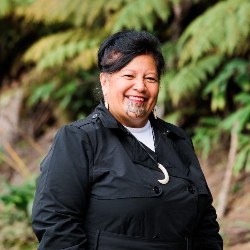A Hidden Treasure exposed – launch on 2 November
A Hidden Treasure exposed – launch on 2
November
Wellington is
enhancing its Cultural Capital status as pedestrians walking
the city’s Golden Mile are now exposed to what is thought
to be the world’s first permanent outdoor electronic art
gallery.
“We’re taking the incredible collections hidden in Museum and Council archives and putting them onto the street where people can see them,” says Andrew Hagen, creative director of the Urban Art Foundation.
Situated on Lambton Quay at the corners of Johnston, Brandon and Panama Streets, three unique high quality electronic screens have been built courtesy of Wellington City Council and outdoor advertising company Adshel as part of that company’s “Giving Back to the Community” initiative. The art screenings, interspersed with some advertising will run 24 hours a day, seven days a week, with new art arriving on a regular basis.
The screens, and the art, will be officially ‘launched’ at an event in Lambton Quay at 7pm on Thursday 2 November. Mr Hagen and colleagues will be joined by Mayor Justin Lester, Adshel representatives and creative community leaders. Media representatives are welcome to attend.
“What most people don’t realise is that due to the lack of gallery space, only about seven percent of the art owned by New Zealand taxpayers and ratepayers is on display. The rest remains in storage, mostly out of reach of the public.” Says Hagen: “This particular Urban Art initiative gives New Zealanders and tourists alike an opportunity to view at least some of this $568 million archive.
“The title Hidden Treasures came about while we were discussing the idea with the Ministry of Culture and Heritage, and we thought … that’s a great name for this current exhibition. From here on, the public is going to be seeing some pretty amazing images, a good representation of the exceptional range and quality of New Zealand art,” says Hagen.
“The initiative has certainly taken people by surprise and is bringing a whole new ambience to the city.” says Hagen. “We’ve got the old and the new, and over the next few years, we’re going to try and cover the best of NZ art from Karl Maughan to Rita Angus to Charles Goldie.
“Any city can become a grey, toneless, drab place if a lively colourful culture isn’t instilled into it, and this is a perfect way to do just that. At the same time we will be introducing a lot of people to art and artists they’ve never seen before,” says Hagen.
He says he and his team have been working on the concept for over a year and believes it offers an exciting opportunity to further enhance our cultural heritage.
“It’s worth remembering that a lot of people don’t go to galleries and have no idea what’s being exhibited inside, or more to the point, what’s hiding in the archives. Urban Art is all about changing that paradigm and Wellington is the perfect city to start our initiative.”
Hagen says he came up with the idea while waiting for traffic lights to change. “I’d been at a gallery opening and was thinking how wonderful it would be if everyone could have the opportunity to see what I had just seen ... and then it just dawned on me.”
“In regard to Lambton Quay, I really had no idea, till I saw the foot traffic numbers that so many people would be exposed to the electronic art on a daily basis. It’s estimated that up to 1700 pedestrians will pass by during a normal lunch hour, going up to a potential of 9000 people over a whole day. As well, people who stop to look at a particular art piece, and want to find out more about it, will be directed to our website for background information.
“The artwork is shown in 16 second bursts allowing people time to contemplate and absorb. If the art is not already showing when you arrive at the screen, you just need to wait a few seconds for it to appear,” he says.
“Hidden Treasures, our first collection, is curated from works kindly provided by Wellington City Council and Te Papa. Our vision is to expand this concept into other major New Zealand cities, sourcing material from galleries, councils and private collections throughout the country.
Hagen points out that this is only the first of many initiatives the Urban Art Foundation has planned for the near future as it continues taking New Zealand art out of the archives and onto our streets.


 Gordon Campbell: On bird flu, AUKUS entry fees and Cindy Lee
Gordon Campbell: On bird flu, AUKUS entry fees and Cindy Lee Government: Saves Access To Medicines
Government: Saves Access To Medicines Office of the Speaker: Law And Order, Finance, And Defence A Focus For Ukrainian Parliamentary Delegation To NZ
Office of the Speaker: Law And Order, Finance, And Defence A Focus For Ukrainian Parliamentary Delegation To NZ Environmental Defence Society: Fast-track Approvals Bill Presents A Serious Risk To New Zealand Exporters
Environmental Defence Society: Fast-track Approvals Bill Presents A Serious Risk To New Zealand Exporters NZ Government: New Lab To Help Protect Key Pacific Tuna Fisheries
NZ Government: New Lab To Help Protect Key Pacific Tuna Fisheries Susan Botting - Local Democracy Reporter: Ruawai Leader Slams Kaipara Council In Battle Over $400k Property
Susan Botting - Local Democracy Reporter: Ruawai Leader Slams Kaipara Council In Battle Over $400k Property Te Pati Maori: Another ‘Stolen Generation’ Enabled By Court Ruling On Waitangi Tribunal Summons
Te Pati Maori: Another ‘Stolen Generation’ Enabled By Court Ruling On Waitangi Tribunal Summons


